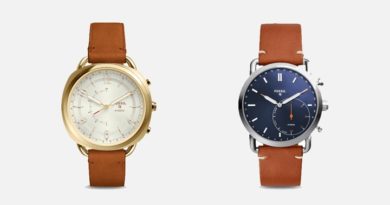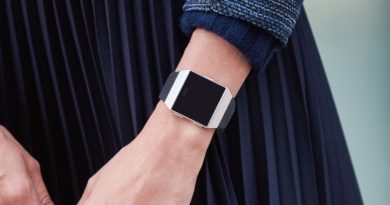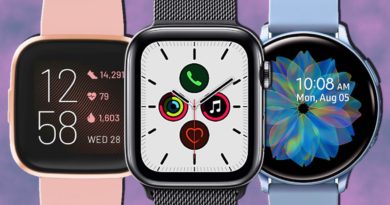Apple Watch ECG app: what is it, how does it work and is it accurate?
The Apple Watch put the rest of the industry on notice when it announced electrocardiogram heart measurements back in 2018 – and the feature has been saving lives ever since.
Now available on both the Apple Watch Series 4 and Series 5, ECG readings allow users to receive a medical-grade, FDA-approved insight into their heart rhythm. The 30-second test is then able to help detect a potential abnormality and suggest a diagnosis of atrial fibrillation.
Read next: Complete guide to the Apple Watch heart monitorThat’s the skinny version, but there’s so much more to learn about how the Apple Watch ECG app works on your wrist. In this guide, we’ll be explaining all the ins and outs of the groundbreaking health feature, including how accurate it is versus medical equipment and how to set it up.
What is an ECG measurement?An ECG reading is used to capture the electrical activity in the heart over a short period. Typically, this is performed through a medical-grade ECG machine, though Apple has managed to bring this health technology to its smartwatches.
It does so by using both the electrical heart rate monitor on the underside of the Apple Watch and the Digital Crown, where users need to place a finger from the opposite hand. This lets the Watch monitor beats across the heart.
The ECG reading is checking to see if the upper and lower chambers of your heart are in rhythm. If it detects they’re out of rhythm, this is an indicator of the heart condition atrial fibrillation. In a single 30-second test, the Apple Watch can tell you if it think you’re showing signs of A-Fib, but you’ll likely need to perform the test several times to get a proper indication.Are Apple Watch ECG readings accurate?Since Tim Cook stood on stage and announced the arrival of the ECG app, cardiologists and health experts have speculated on just how accurate the Watch is at detecting irregular rhythms.
After all, this kind of thing would usually be reserved for professional equipment handled by, well, medical professionals – not a tech company.
Apple has acknowledged it’s got plenty to do before the feature fully reaches its potential, and just last year published the results of its related Apple Heart Study, which Stanford University also had a hand in.
The bottom line from the research performed so far? It’s impossible to know exactly how accurate it is, but it’s probably accurate enough.
Why? Well, to get clearance from the FDA in the US and then the CE mark for use in the EEA, it has to meet a certain standard of accuracy. During testing of 600 subjects in a controlled environment, the Watch was able to accurately detect the sinus rhythm classification with 99.6% accuracy, and reach the AFib classification with 98.3% accuracy.
The technology isn’t flawless, and the Watch can’t say for certain if you actually have AFib. Even when it’s monitoring throughout the day, it isn’t continuous. It also can’t detects signs of heart attacks, strokes or other heart conditions.How to set up the ECG app on Apple WatchAs mentioned already, you must have an Apple Watch 4 or Apple Watch 5. This is because the ECG app requires the new Digital Crown to record the electrical pulses, so users with an Apple Watch 3, or below, won’t be able to use the feature.
You also need to make sure your iPhone and Apple Watch are running the latest version of iOS and watchOS, as this will bring your Health app and ECG app up to date.
Next, open up the Apple Health app on your phone. Assuming you’ve performed the aforementioned updates, you’ll get a prompt to set up the ECG. For this, all you need to do is enter your date of birth, then you’ll be asked to take your first ECG reading.How to take an Apple Watch ECG readingAfter the initial setup is complete, you can take an ECG reading any time by going into the ECG app on the Apple Watch itself. Before you go any further, you want to make sure the watch is correctly placed on your wrist – not too tight, not too loose – and then, ideally, rest your arm on something. That’s what Apple advises, at least, though we’ve found that as long as you’re reasonably still it has no problem getting a reading.Then, touch your index finger from the opposite hand against the Digital Crown. You don’t need to do this too hard, just enough that it’s covering the entirety of the circle. You’ll then see a graphic of your heart rate in real time and a timer counting down from 30 seconds. After 30 seconds, the Watch will be able to give you the results.Apple Watch ECG results: What do they mean?Sinus rhythm: If everything is good and your heart is beating in a uniform pattern between 50 and 100 BPM, you’ll see ‘Sinus rhythm’ show up. Phew – but we would still recommend doing it several times and turning on irregular rhythm notifications (more on that below).Atrial fibrillation: This means the Watch has detected your heart is beating in an irregular pattern within those same heart rate boundaries. If you get this result, you should perform the test several times and consider consulting your doctor.Low or high heart rate: If your heart rate is higher than 100 BPM or lower than 50 BPM, the reading is deemed inconclusive. There are copious reasons for this; a high heart rate could come from exercise, stress or even alcohol, while a low one can come from intense training. If you do find your heart rate to be too low or high, you should find out why and, if necessary, consult a doctor.Inconclusive: It’s possible for the ECG app to deliver this result, which can arise from many things, including too much movement during the test or having the Watch not fitted correctly on your arm.
Set up irregular rhythm notificationsOn top of readings you perform manually, you can also have the Apple Watch take occasional readings (usually in moments when you’re still) to keep an eye for signs of irregular heart patterns. While periodic checks are good, continuous monitoring enables the Apple Watch to receive a more comprehensive picture of how your heart is working. Follow the steps below to turn irregular rhythm notifications on.1. Open the Apple Health app and tap on ‘Health Data’.2. From there, tap on the Heart, scroll down to the bottom and tap on ‘Irregular Rhythm Notifications’. You’ll need to enter your date of birth again and tell the app whether you’ve been diagnosed with atrial fibrillation before.3. The Watch will then monitor for signs of atrial fibrillation, and, if it detects signs on multiple occasions, it’ll send you a notification.


